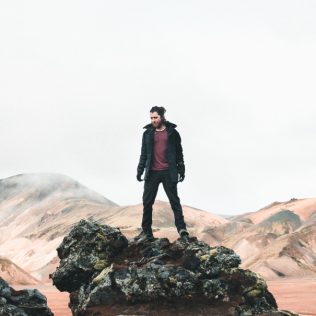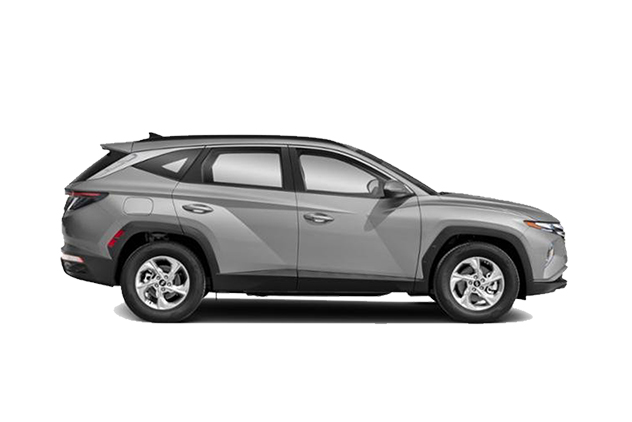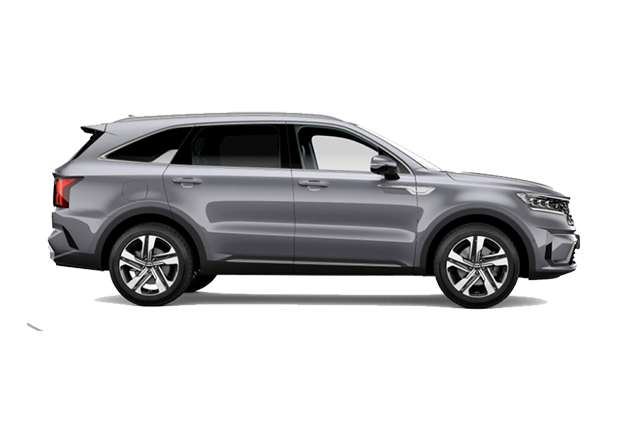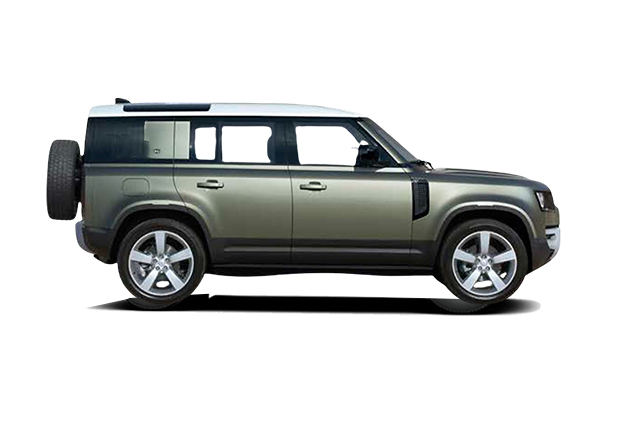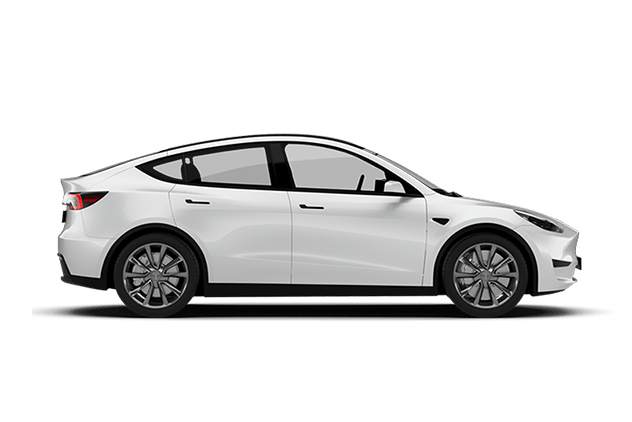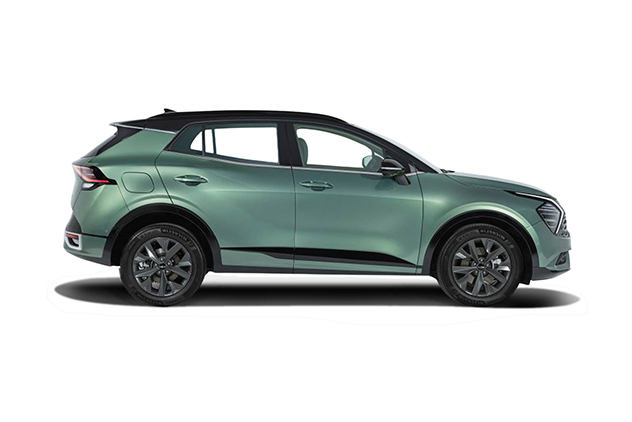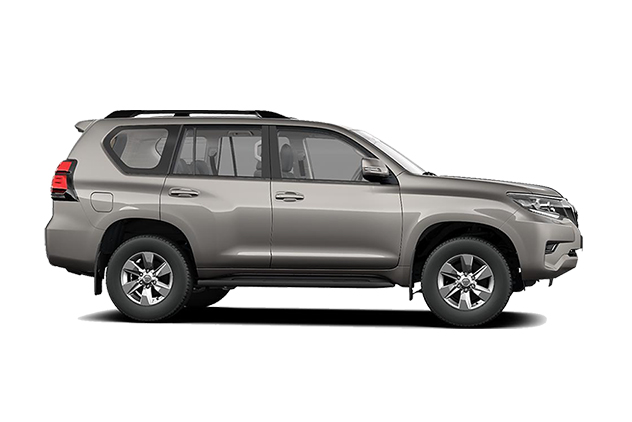Are you thinking about visiting Iceland in July? July is the most popular month to travel the country, and it’s easy to see why. July brings Iceland’s best weather, the longest daylight hours of the year, and full access to some of its most remote and beautiful places. Roads are clear, trails are open, and you can explore well into the evening thanks to the midnight sun.
If you’re planning to rent a car and explore Iceland on your own, July is one of the best times to do it. From driving the Ring Road to camping in the Highlands or spotting puffins on the cliffs, there are more things to see and do this time of year than any other. This guide covers everything you need to know, including what the weather is like in Iceland in July, what to pack, where to go, and how to plan the perfect self-drive trip.
- Related links: Iceland in June; Driving in Iceland
Table of Contents
- Iceland Weather in July
- What to Wear in Iceland in July
- Driving Conditions in Iceland in July
- The Best Rental Car for Iceland in July
- Is July a Good Time To Go to Iceland?
- Best Things to Do in Iceland in July
- Best Festivals and Events in Iceland in July
- Self-Drive Itinerary for July
- What Does Iceland in July Look Like?
- Frequently Asked Questions
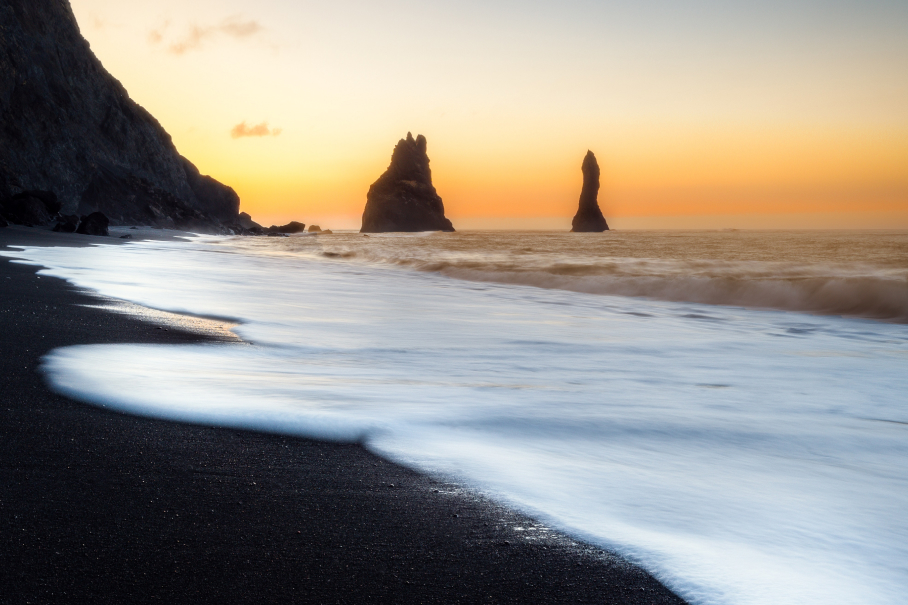
Iceland Weather in July
If you’re looking for the best weather in Iceland, July is as good as it gets. While it’s still unpredictable by most standards, this is the month when the skies are clearest, the temperatures are warmest, and the days feel never-ending. For that same reason, you are NOT able to see northern lights in Iceland in July.
Temperature of Iceland in July
Daytime highs in July typically sit between 13°C and 15°C (55°F–59°F), but it’s not uncommon to see sunny days reach up to 20°C (68°F), especially inland. Nighttime temperatures tend to hover around 9°C (48°F). While that’s still chilly by most summer standards, it’s comfortable enough for outdoor activities with the right layers. Rain is always a possibility, but it tends to be lighter and less frequent than other times of year.
Daylight Hours in July
One of the most magical features of Iceland in July is the midnight sun. Around mid-July, parts of the country experience 20+ hours of daylight, and in the north, it never truly gets dark. This means you can hike at 10pm, visit waterfalls in the golden twilight hours, or take your time at scenic viewpoints without racing against the clock.
What to Wear in Iceland in July
Even though the weather in Iceland in July is the most favorable of the year, it’s still important to be prepared for rapid shifts. A day that starts with sunshine can easily turn cloudy and windy, and you’ll want to be ready for both. If you’re wondering what to pack for Iceland in July, here are our top recommendations:
- Waterproof jacket
- Sturdy, waterproof hiking boots/ shoes
- Insulated outer layer
- Gloves, hat, and scarf
- Thermal base layer
- Swimwear
- Comfortable activewear for hikes
- Sunscreen
- Neoprene socks
- T-shirts and longsleeve shirts
- A pair of shorts
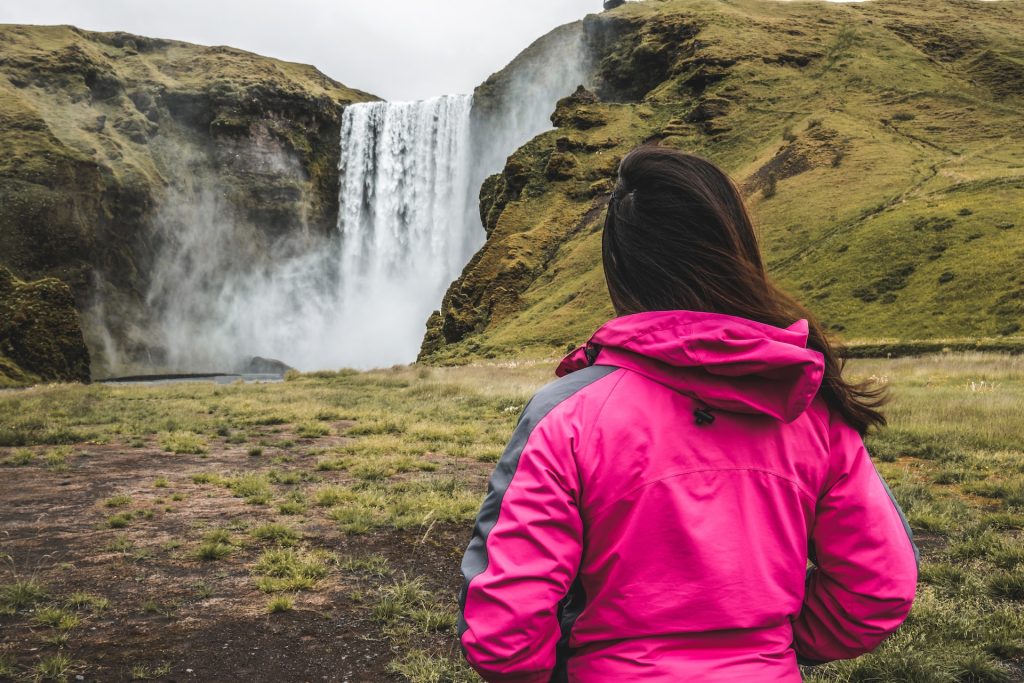
Driving Conditions in Iceland in July
Driving in Iceland in July is straightforward and enjoyable. Roads are clear of snow and ice, visibility is excellent, and most routes, especially Route 1, are in good condition. This is the best time of year for self-drive travel, and it opens up opportunities that simply don’t exist in winter.
The biggest advantage July offers is access to Iceland’s F-roads, the mountain roads that lead into the remote highlands. These are closed for much of the year but open in late June or early July depending on snowmelt. Driving these gravel roads lets you reach places like Landmannalaugar, Askja, and Þórsmörk, which are some of Iceland’s most rugged and beautiful areas.
That said, F-roads are rough, often involve river crossings, and require a 4×4 vehicle. They should be approached with caution and only by confident drivers. For regular sightseeing on the Ring Road or Golden Circle, a 2WD vehicle is typically fine in July. Just remember that road conditions can still change with sudden rain, so check road.is and safetravel.is daily before setting out.
The Best Rental Car for Iceland in July
Thanks to the favorable weather and open roads, July gives you the freedom to choose a rental car based on your travel plans rather than just the season. If you’re sticking to the main routes like the South Coast, Golden Circle, or Ring Road, then a 2WD compact or economy car will serve you well, especially if you’re traveling solo or as a couple.
However, if you’re planning to access the Highlands or drive any F-roads, you’ll need to rent a 4×4 SUV with high ground clearance. A vehicle like the Toyota Land Cruiser or Dacia Duster is ideal. Not only is it a legal requirement for F-roads, but it also provides the traction and clearance you’ll need to navigate river crossings and rocky trails.
Campervans are another excellent choice in July. With over 200 designated campsites open across the country, it’s easy to camp comfortably. Just be sure to book your vehicle early as July is the most popular month to travel in Iceland, and rentals (especially 4x4s and campervans) get booked out months in advance.
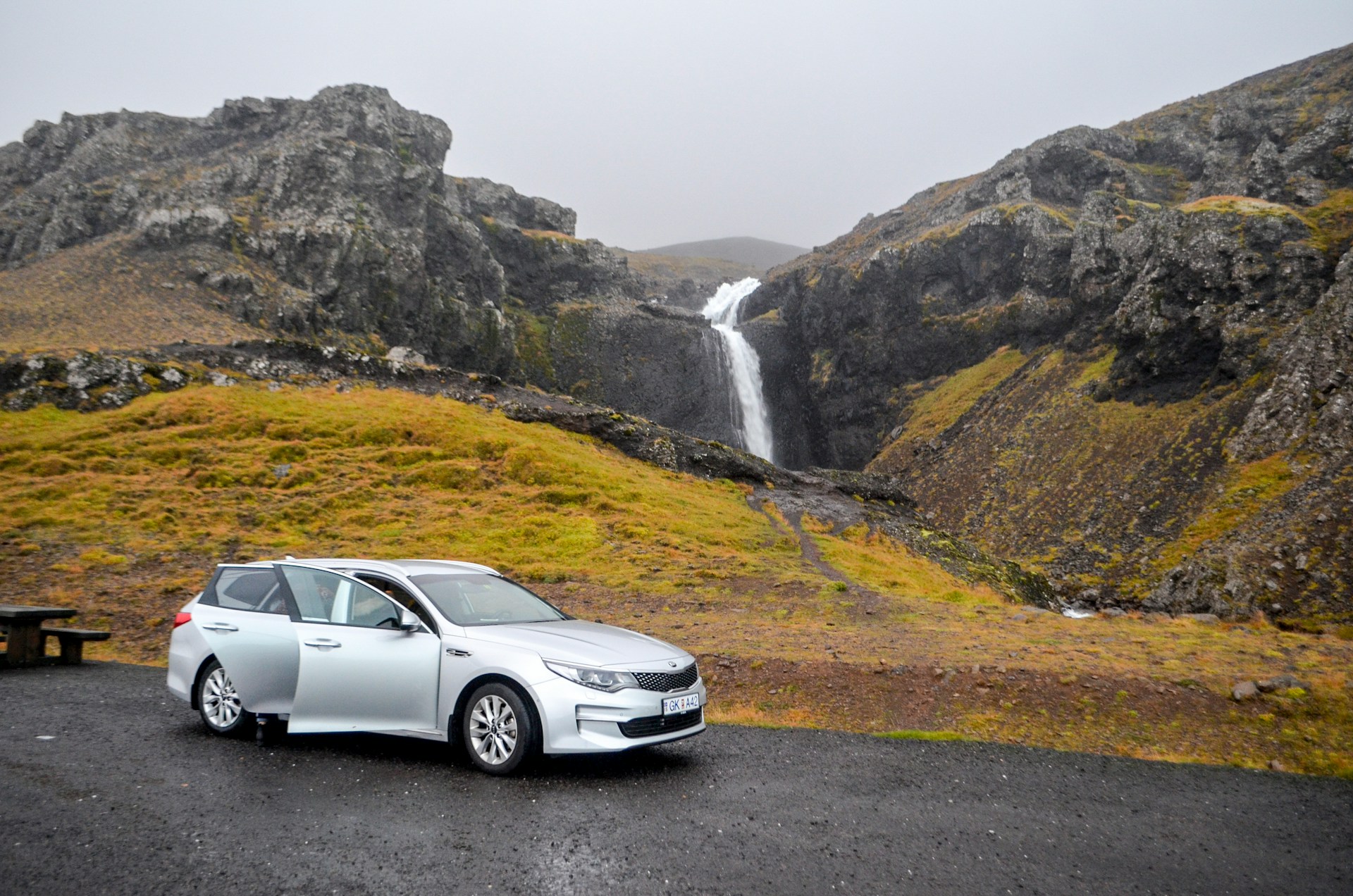
Is July a Good Time To Go to Iceland?
If you want to experience Iceland at its most active and accessible, July is hands down one of the best months to visit. You’ll be able to access the entire country, including remote corners like the Westfjords and Highlands, and enjoy long daylight hours that let you pack in more adventure each day.
On the flip side, it’s also the busiest month of the year. Iceland attractions like Skógafoss, the Golden Circle, and the Blue Lagoon can feel crowded, especially in the middle of the day. Accommodations, tours, and cars are in high demand, and prices rise accordingly, so that means you need to plan ahead. Book your car, stays, and any popular tours at least two to three months before your trip.
Best Things to Do in Iceland in July
With long daylight hours, accessible roads, and nature at its peak, July offers one of the most rewarding times of year to explore Iceland’s landscapes. Whether you’re hiking in the Highlands, camping under the open sky, or soaking in a hot spring after a long drive, Iceland in July is filled with unforgettable moments. Here’s a deeper look at what to do and why each activity is uniquely special in summer.
1. Drive the Route 1 Ring Road
If you’re visiting Iceland in July, driving the full Ring Road (Route 1) is one of the best ways to experience the country. This scenic loop stretches approximately 1,333 kilometers (828 miles) and connects many of Iceland’s most iconic natural wonders. Thanks to the good weather in July, the entire road is open and accessible, even in the more remote stretches of East and North Iceland.
Over the course of 7–14 days, you can visit Iceland waterfalls like Seljalandsfoss and Skógafoss, explore the black sand beaches of Vík, walk through lava fields in the Lake Mývatn area, and admire icebergs floating in Jökulsárlón Glacier Lagoon. Unlike winter, when weather and road conditions can make travel more difficult, July allows for a more relaxed and flexible journey, with long daylight hours giving you the freedom to take detours, extend stops, and explore at your own pace.
Just remember: even though it’s summer, the Ring Road still includes gravel segments and one-lane bridges. Always drive cautiously and allow extra time for sightseeing stops and sheep crossings!
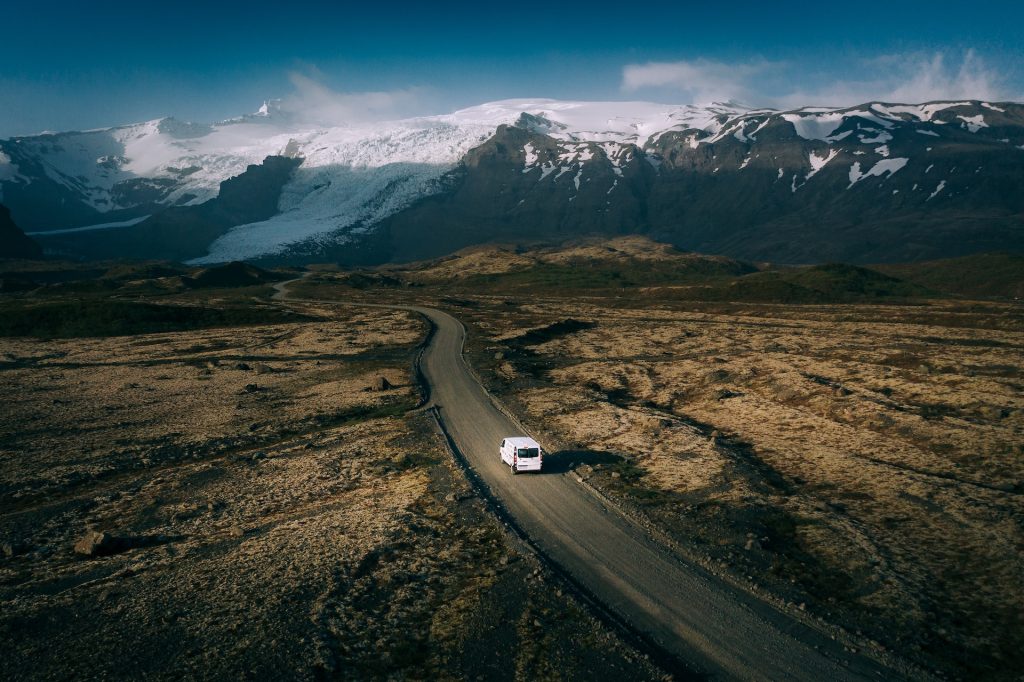
2. Witness the Midnight Sun
One of the most awe-inspiring parts of traveling to Iceland in July is witnessing the midnight sun. This natural phenomenon, caused by the country’s proximity to the Arctic Circle, means the sun never fully sets in much of Iceland during this time of year. Even when it dips below the horizon, twilight lingers for hours.
The light is often soft and golden, creating magical photo opportunities, especially around midnight, when the sky glows pink, lavender, and orange. It’s hard to describe how surreal it feels to hike to a waterfall or sit at a geothermal hot spring at 11:30pm with sunlight still stretching across the landscape.
Some of the best places to experience the midnight sun in Iceland include Kirkjufell mountain, Reynisfjara beach, and Þingvellir National Park. You can even plan a late-night drive or hike to avoid crowds and take full advantage of the endless daylight.
3. Hike Iceland’s Most Iconic Trails
Thanks to the warmer temperatures and retreating snow, hiking in Iceland in July is simply unmatched. Trails that are inaccessible for much of the year finally open up, and conditions are generally dry and stable. This is also when the Icelandic Highlands become reachable.
The Laugavegur Trail, Iceland’s most famous multi-day trek, takes you from Landmannalaugar to Þórsmörk over several days. Along the way, you’ll pass rainbow-colored rhyolite mountains, obsidian lava fields, steaming vents, and icy rivers. July is the perfect time to tackle this route, as the trail is usually fully open and serviced mountain huts are operating.If you’re looking for day hikes, Glymur Waterfall, Fimmvörðuháls, Skaftafell National Park, and Hveradalir geothermal valley in Kerlingarfjöll offer incredible variety. You’ll see everything from glaciers and volcanoes to meadows bursting with arctic wildflowers.
4. Go Camping
July is the high season for camping in Iceland, and it’s easy to see why. With over 200 designated campsites, mild nighttime temperatures, and long days, it’s the perfect way to stay close to nature. Whether you’re in a tent or a campervan, sleeping outdoors gives you the flexibility to move at your own pace and the chance to fall asleep beside a glacier, a fjord, or a waterfall.
Unlike other times of year, there’s no risk of frost or snow, and most campsites are fully serviced in July, with showers, bathrooms, and cooking shelters. Some of the most scenic campsites include:
- Þakgil, near Vík – a hidden green canyon with stunning views
- Landmannalaugar – the starting point of the Laugavegur Trail
- Skaftafell, in Vatnajökull National Park – ideal for glacier views and hiking
- Ásbyrgi, in the north – nestled in a horseshoe-shaped canyon
Wild camping is not permitted, so always use designated campsites. And even in summer, a warm sleeping bag is essential as temperatures can still drop below 10°C (50°F) overnight.
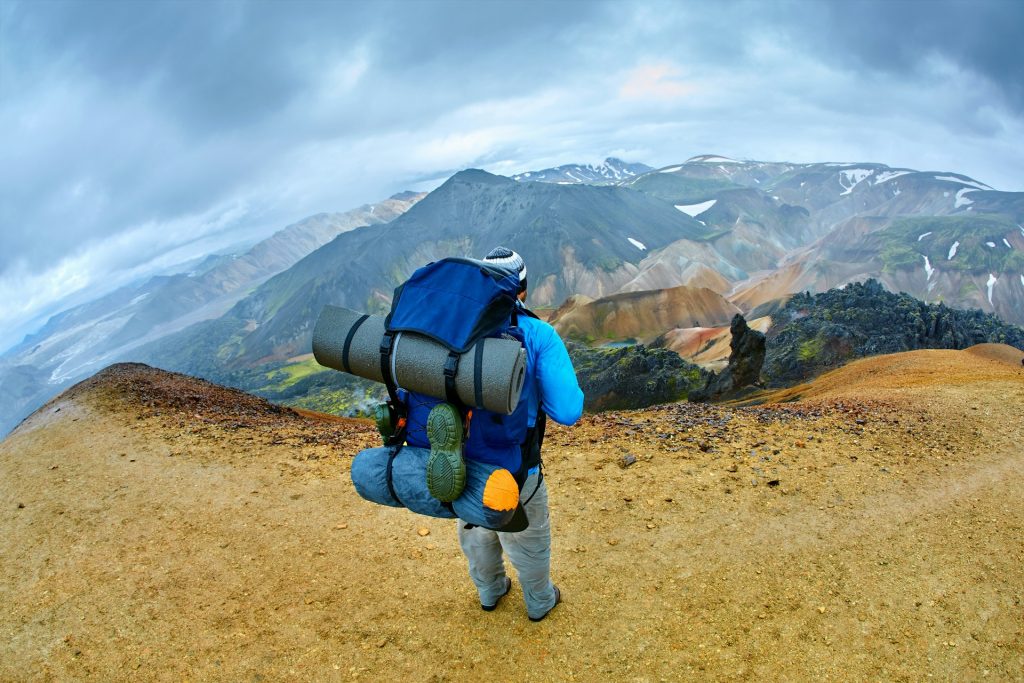
5. Snorkel Between Continents at Silfra
Snorkeling in Silfra Fissure, a crack between the North American and Eurasian tectonic plates, is a year-round activity, but going in July will provide some added comfort. The water in Silfra is always around 2–4°C (35–39°F), but warmer air temperatures make gearing up and drying off much easier.
The visibility in Silfra is unbelievable, often exceeding 100 meters, thanks to glacial meltwater filtered through underground lava for decades. You’ll glide through narrow canyons and between giant boulders in crystal-clear water, with shades of turquoise and dark blue all around you. It’s like floating in another world.
Snorkeling tours depart from Þingvellir National Park daily, or you can arrange tours with pick up at your accommodation, and dry suits are provided. No previous experience is needed, though you must be comfortable in cold water.
6. Spot Whales and Puffins
Wildlife watching in July is as good as it gets. Puffins nest along Iceland’s cliffs from May to August, and in July, they’re right in the middle of the breeding season. You’ll spot these charismatic birds in huge colonies at Dyrhólaey, Látrabjarg cliffs, and the Westman Islands, where puffin-watching boat tours are also available.
Whale sightings are just as impressive. Húsavík, often called the whale-watching capital of Iceland, is a great place to spot humpbacks, minkes, and sometimes even blue whales. You can also join whale-watching tours from Akureyri, Reykjavík, or Dalvík. Many companies use silent electric boats to minimize environmental impact and improve the viewing experience.
July also brings other seabirds and seals to Iceland’s shores, so keep your binoculars handy, especially if you’re camping or exploring quieter parts of the coast.
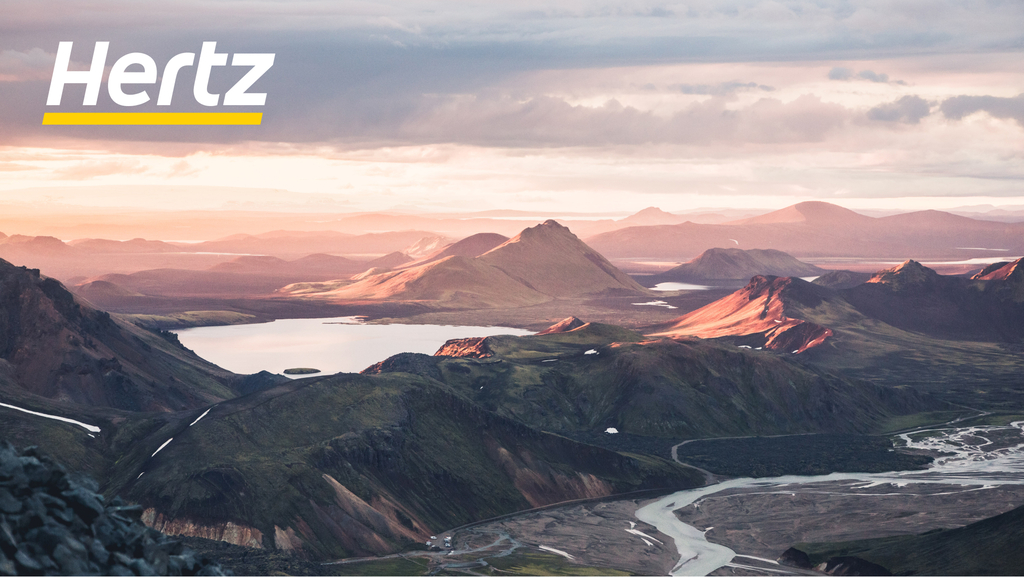
7. Explore the Icelandic Highlands by 4×4
Most of Iceland’s Highland interior is inaccessible for much of the year, but July is when the gates open. These uninhabited regions, carved by ancient glaciers and volcanic eruptions, are only reachable by F-roads, which gravel routes that often involve fording rivers and crossing rocky plains. You’ll need a 4×4 to legally and safely explore them. Not only is it illegal to drive the F-roads with a 2WD, but there are also many Iceland river crossings that you will be unable to navigate without a 4X4 that has high clearance.
Popular Highland destinations include:
- Landmannalaugar – famous for colorful mountains and geothermal hot springs
- Þórsmörk – a lush valley between glaciers, with fantastic hiking
- Askja Caldera – a remote volcanic crater in the northeast
- Kerlingarfjöll – geothermal valleys and dramatic ridgelines
These areas offer solitude, surreal beauty, and landscapes that feel almost untouched. If you’re looking for something beyond the usual Ring Road route, the Highlands are where you’ll find it.
Best Festivals and Events in Iceland in July
July is peak festival season in Iceland. With warm weather, long days, and a celebratory summer mood across the country, locals and visitors alike gather to enjoy everything from folk music and medieval reenactments to art residencies and world-class classical performances. Many of these events take place in small towns and rural villages, making them a perfect addition to a self-drive itinerary.
Here are some of the most notable festivals in Iceland in July, along with why each one is worth attending:

1. Siglufjörður Folk Music Festival
Held in the picturesque town of Siglufjörður in North Iceland, this annual festival celebrates Iceland’s rich folk music traditions, with a strong emphasis on Scandinavian and Nordic roots. It usually takes place during the first weekend of July, transforming the remote fishing village into a lively cultural hub.
You’ll find everything from traditional Icelandic rímur chanting and fiddle performances to dance workshops, lectures, and local handicrafts. The festival is intimate, community-driven, and deeply tied to local heritage. Up to 19 concerts take place across quaint indoor venues and open-air stages, often accompanied by storytelling, Icelandic sagas, and family-friendly activities.
The setting itself is beautiful, tucked between towering fjord walls and the sea. If you’re driving through the north in early July, this is a must-stop experience to get a deeper understanding of Icelandic culture.
2. LungA Art Festival
The LungA Art Festival in Seyðisfjörður, East Iceland, is one of the country’s most vibrant creative events. Taking place over a week in mid-July, LungA brings together young artists, musicians, and creatives from around the world to participate in workshops, exhibitions, and concerts throughout the village.
What makes LungA special is the sense of experimentation and collaboration it fosters. Events pop up in converted fish factories, by the fjord, and even in the mountains. It’s equal parts festival, art residency, and community experience. For travelers driving the East Fjords in July, timing your visit with LungA adds a unique cultural dimension to your road trip.
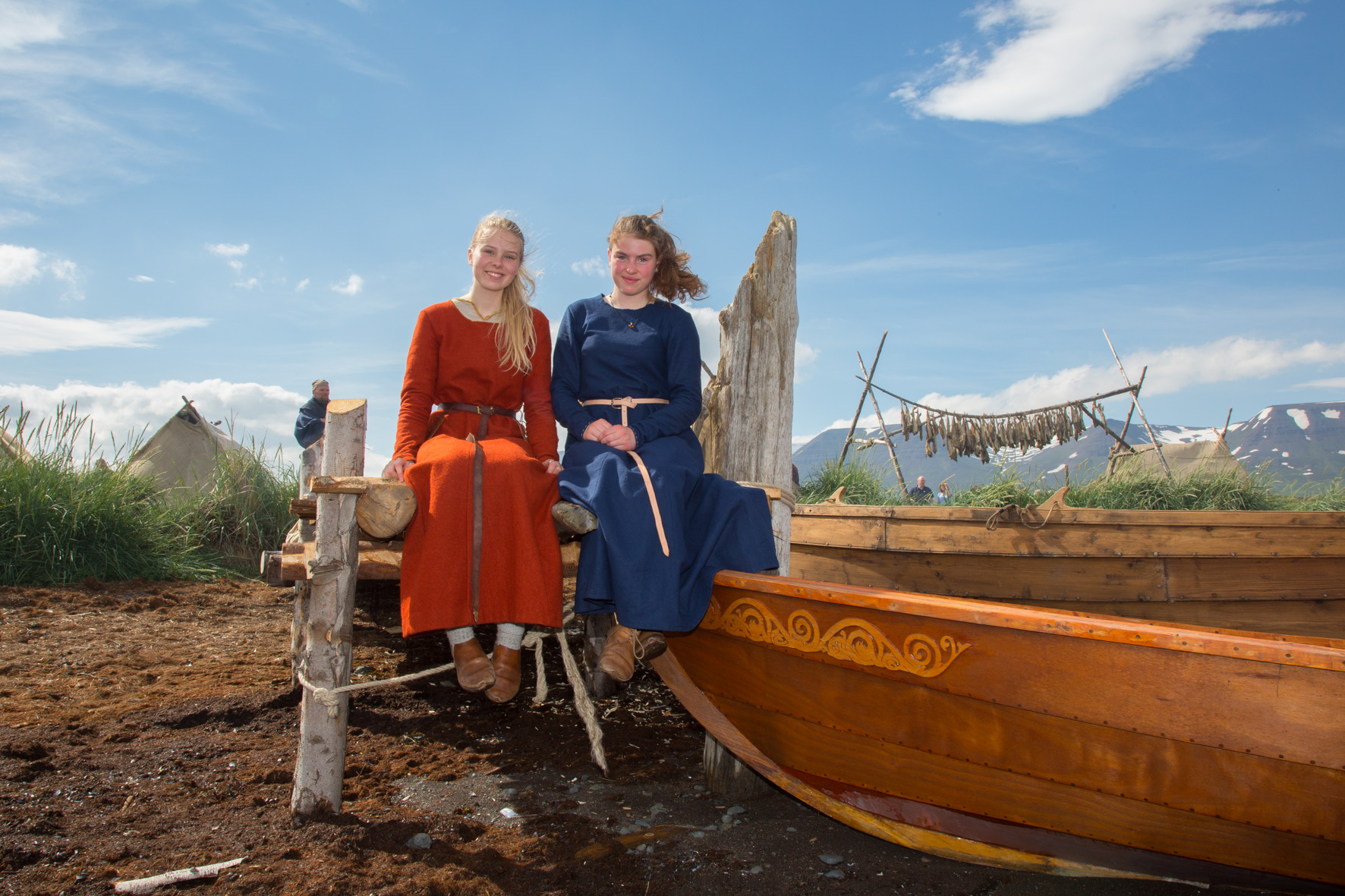
3. Medieval Days at Gásir
For a completely different experience, head to Gásir, just north of Akureyri, for Medieval Days in late July. This family-friendly event takes place at the site of a historic medieval trading post, once one of Iceland’s most important commercial centers during the 13th and 14th centuries.
During the festival, the area is transformed into a living history site. You’ll find costumed reenactors (known as Gásverjar) performing daily tasks like blacksmithing, wool dyeing, woodcarving, and medieval cooking. Children can participate in games and storytelling, and everyone is welcome to try traditional crafts or sample old Icelandic recipes.
The festival provides a hands-on way to learn about Iceland’s past and is a great addition to a northern itinerary, especially for families or history enthusiasts.
4. The Heart of Hafnarfjörður Festival
The Heart of Hafnarfjörður is a vibrant summer music festival that runs from late June through July in the coastal town just outside Reykjavík. Centered around the Bæjarbíó concert hall, it features dozens of live performances, a lively outdoor area, food trucks, and a festive local atmosphere. With thousands of guests attending each year, it offers a great way to experience Icelandic music culture and community spirit during your July trip.

5. Reykholt Chamber Music Festival
Located in the historic village of Reykholt in West Iceland, this refined yet accessible chamber music festival is typically held in late July. Performances take place in the town’s acoustically excellent church, drawing both international and Icelandic musicians who perform classical repertoire from Mozart to contemporary Nordic composers.
Reykholt itself is steeped in history. It was the home of Snorri Sturluson, a famous Icelandic poet, historian, and politician in the 1200s. Attending a concert here feels like stepping back in time, surrounded by geothermal steam, wildflowers, and the echoes of Icelandic sagas. If you’re driving between the Snæfellsnes Peninsula and Reykjavik, this makes a perfect cultural stop, particularly for those who appreciate music in atmospheric surroundings.
6. National Icelandic Horse Competition (Landsmót Hestamanna)
Held every other year, the National Icelandic Horse Competition (Landsmót Hestamanna) is Iceland’s largest outdoor sporting event and a major celebration of the country’s iconic breed. While it’s not held annually, it’s worth planning around if your travel dates align. Thousands of spectators gather to watch riders and horses compete in events that showcase the Icelandic horse’s unique gaits, especially the tölt, a smooth, four-beat gait for which the breed is world-famous. The competition site transforms into a vibrant pop-up village, complete with camping grounds, markets, food vendors, music, and family activities.
Even if you’re not a horse expert, attending Landsmót offers a memorable look into Iceland’s rural culture and the deep connection between Icelanders and their horses. The location changes with each edition, rotating between towns like Hella, Reykjavík, and Hólar.
Suggested Self-Drive Itinerary for Iceland in July
July’s long days, open roads, and warm weather make it the perfect month for a full-circle road trip around Iceland. This 10-day itinerary includes highlights from the Ring Road, a detour into the Highlands (if you’re driving a 4×4), and options for cultural stops depending on your interests.
Day 1: Arrival + Reykjavik
Pick up your rental car at Keflavík Airport and drive into the capital. Spend the day exploring Reykjavík’s landmarks such as Hallgrímskirkja, Harpa Concert Hall and the Sun Voyager. If you have time, take a dip at Sky Lagoon.
Overnight: Reykjavík
Day 2: The Golden Circle
Start your drive with the Golden Circle: walk between tectonic plates at Þingvellir, watch Strokkur erupt in the Geysir area, and feel the spray at Gullfoss waterfall. Optional stops include the Secret Lagoon or Kerið Crater.
Overnight: Selfoss or Hella
Day 3: South Coast Highlights
Follow the Ring Road to the south coast. Visit Seljalandsfoss and Skógafoss, walk along Reynisfjara black sand beach, and spot puffins at Dyrhólaey. End your day in Vík or Kirkjubæjarklaustur.
Overnight: Vík area
Day 4: Glaciers + Ice Lagoons
Drive through Vatnajökull National Park. Explore Jökulsárlón Glacier Lagoon, Diamond Beach, and the quieter Fjallsárlón. Stop at Skaftafell for short hikes or glacier views.
Overnight: Höfn or near the lagoon
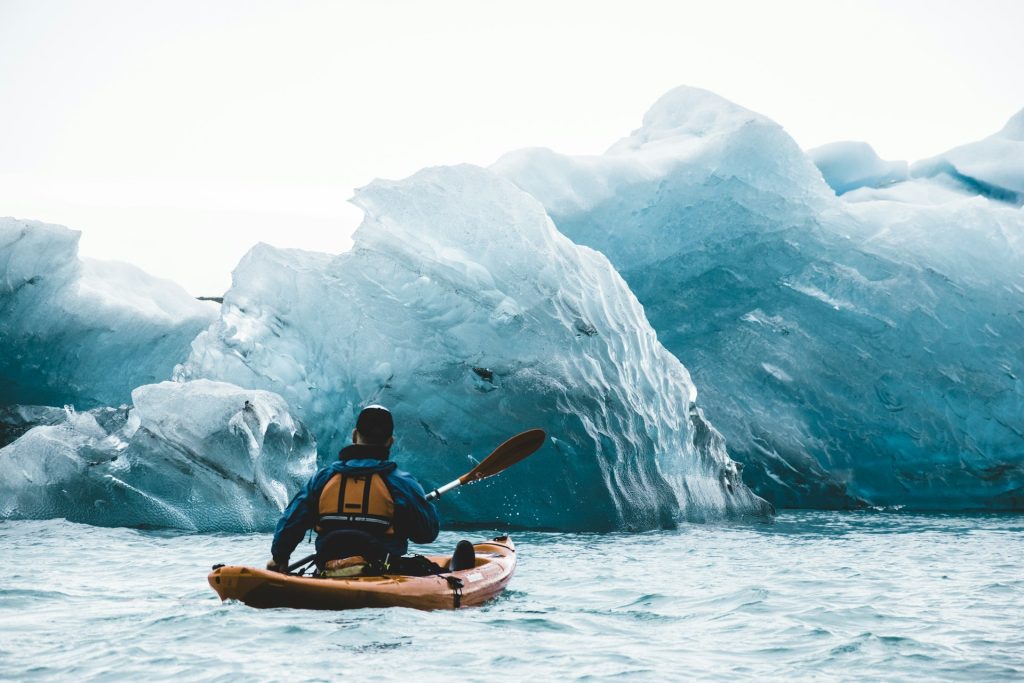
Day 5: The East Fjords
Wind your way through quiet fishing villages and dramatic fjords. This is a slower travel day with great photo ops and fewer crowds. Stop in Djúpivogur, Fáskrúðsfjörður, or Seyðisfjörður (especially if LungA Art Festival is on).
Overnight: Seyðisfjörður or Egilsstaðir
Day 6: Lake Mývatn + North Iceland
Head toward the Mývatn region, stopping at Dettifoss waterfall if you’re up for a short hike. Explore Hverir geothermal area, Dimmuborgir lava field, and end the day with a soak in the Mývatn Nature Baths.
Overnight: Mývatn or Húsavík
Day 7: Whale Watching + Akureyri
Take a whale watching tour from Húsavík, then continue west. Stop at Goðafoss on your way to Akureyri, the unofficial capital of North Iceland. Explore the city’s botanical garden or relax at the local geothermal pool.
Overnight: Akureyri
Day 8: Into the West (via Skagafjörður)
Drive through Skagafjörður, a valley known for horse breeding and historical turf houses. If you’re attending the National Horse Competition, this region is often the host. Stop at Hraunfossar waterfalls en route.
Overnight: Borgarnes or near Reykholt
Day 9: Snæfellsnes Peninsula or Reykjavik Return
If you have time, detour through the Snæfellsnes Peninsula, which is home to Kirkjufell mountain, Arnarstapi sea cliffs, and lava fields around Snæfellsjökull glacier. Otherwise, head back toward Reykjavík for a final city day.
Overnight: Reykjavík
Day 10: Lagoon + Departure
On your final day, relax with a morning coffee and stroll around Reykjavík. If time allows, visit the Blue Lagoon or Reykjanes Peninsula before heading to the airport.
Picture of Iceland in July
Enjoy these incredible views when visiting Iceland in July:
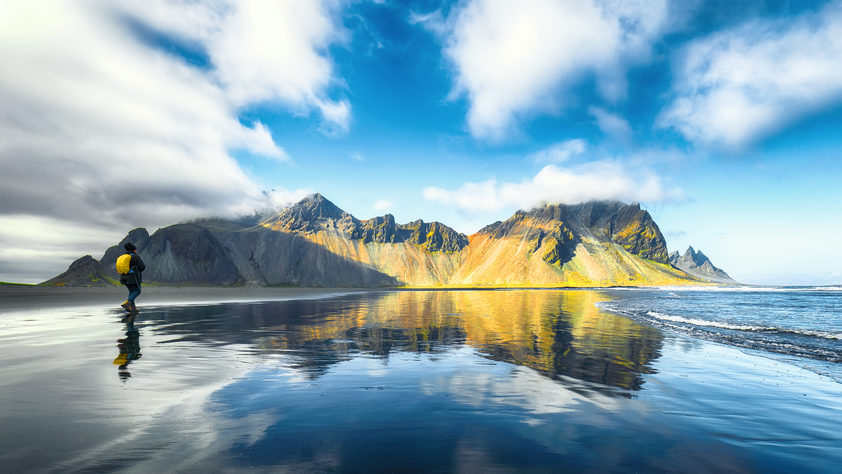
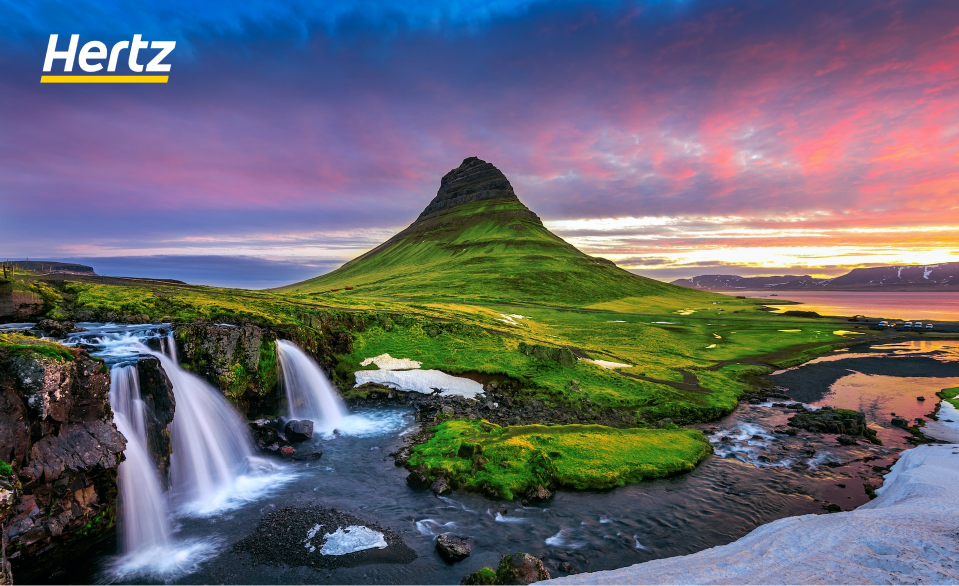
Iceland in July FAQs
-
- Is it possible to see the northern lights in Iceland in July?
No, you won’t be able to see the northern lights in July. Iceland experiences nearly 24 hours of daylight this time of year, thanks to the midnight sun, which means the skies never get dark enough for aurora viewing.
- Is it possible to see the northern lights in Iceland in July?
-
- How much does it rain in Iceland in July?
July is one of Iceland’s driest months, but rain is still possible. On average, Reykjavik sees about 50–60 mm of rainfall during the month. Expect occasional showers, but they’re typically short-lived and mixed with plenty of sunshine.
- How much does it rain in Iceland in July?
-
- Is Iceland too crowded in July?
July is the busiest month for tourism in Iceland, so yes—it can feel crowded at popular attractions like the Golden Circle, Blue Lagoon, and South Coast. However, much of the country remains quiet, especially if you explore the Highlands, Westfjords, or East Fjords.
- Is Iceland too crowded in July?
-
- Does it ever get dark in Iceland in July?
Not really. In early July, the sun barely dips below the horizon, especially in the north, creating a twilight-like glow all night. While you won’t see pitch-black skies, the light does begin to dim slightly by the end of the month.
- Does it ever get dark in Iceland in July?
-
- Can you see glaciers in Iceland in July?
Yes, absolutely. Iceland’s glaciers are visible and accessible year-round. In July, you can even take part in glacier hiking tours on places like Sólheimajökull or Vatnajökull, and admire floating icebergs at Jökulsárlón Glacier Lagoon.
- Can you see glaciers in Iceland in July?
-
- Is Iceland expensive in July?
Yes. July is part of the high season, so prices for flights, accommodations, rental cars, and tours are generally higher. Booking early can help reduce costs and secure availability.
- Is Iceland expensive in July?
-
- Are there midges in Iceland in July?
Yes, particularly around Lake Mývatn in North Iceland, which is actually named after the midges (“mý” in Icelandic). While they don’t bite, they can be annoying, especially on still, warm days. A head net or repellent can help if you plan to visit that area.
- Are there midges in Iceland in July?
Visit Iceland in July
July is one of the best times of year to visit Iceland and is perfect for outdoor enthusiasts who want to spend their vacation immersing themselves in nature. With the warmest temperatures of the year and longest daylight hours, July offers a wide range of activities that are not available in the winter, like camping, watching the midnight sun, and heading into the more remote and untouched areas of Iceland via the F-roads.
A rental car is recommended for self-drive travel, and a 4×4 vehicle is necessary to access F-roads. Make sure that you always book your rental car online and well in advance with Hertz for a trip to Iceland in July. And if you know others that are interested in experiencing all the wonders of Iceland, encourage them to read through our guide by sharing these tips!
